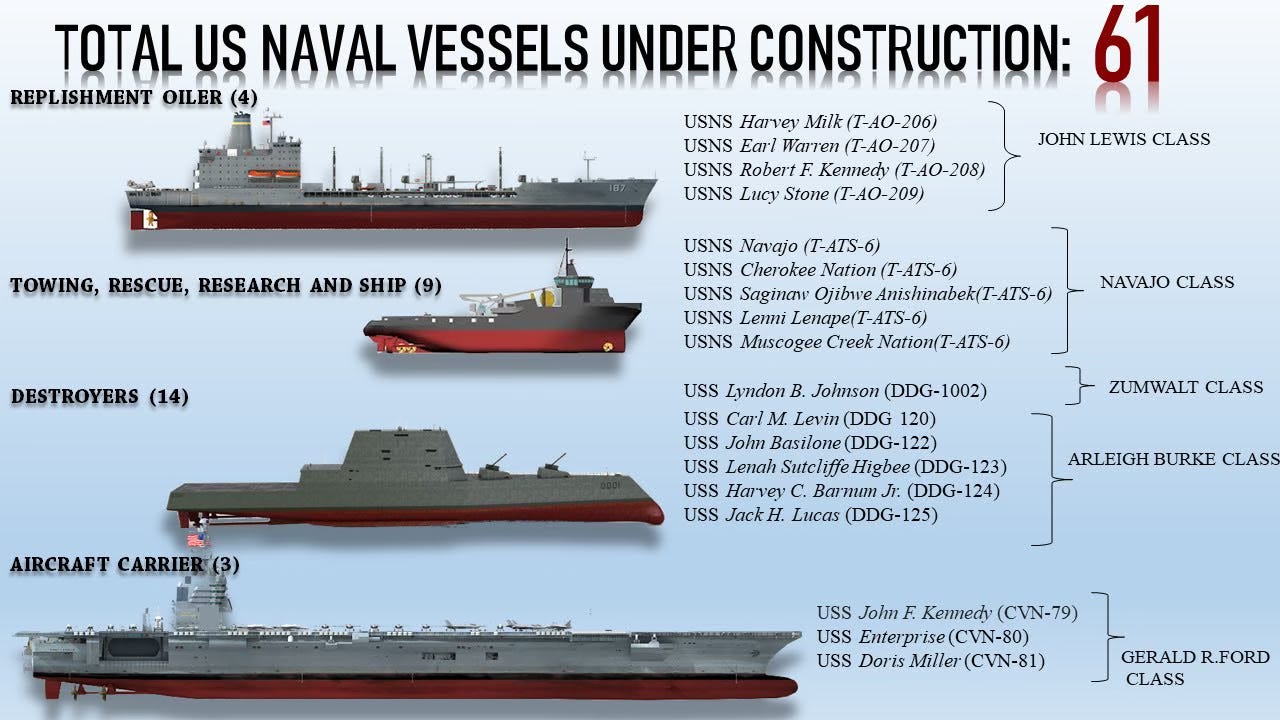A couple of weeks ago, I read this piece at National Review by Michael Brendan Dougherty (often referred to as ‘the Notorious MBD’ on The Editors podcast) and felt compelled to respond with my thoughts. I would encourage you to read it as well, if at all possible. As I will explain, I am not convinced by the author’s stance, but it’s among the best-articulated presentations of the ‘restrainer’ worldview.
I appreciate that National Review employs writers of diverse perspectives, and I think that MBD is among the most thoughtful of the more 'restrainer' leaning voices out there. I often find myself disagreeing with him, but I sometimes find myself rethinking something because of how he articulated a point or pausing to consider something that I hadn't thought about previously.
With that said, I find his essay here to have a side with with I agree and a side with which I disagree. It is undeniable that our defense industrial base is woefully inadequate to the challenge of industrialized near-peer warfare in the 21st century. We just don't make enough materiel. Our platforms are mostly ancient. Many are literally irreplaceable. The state-of-the-art systems that we employ are deliriously expensive. The Army's totally lunatic NGSW/XM7 rifle program is like a dark comedy of unserious, ruinously expensive, ponderously slow defense acquisition nonsense. So pointing out that we've expended vast amounts of Patriot missiles in the Middle East is an undeniable concern. Don't even get me started on how far behind we are in regards to maintaining trade lanes via seapower... How'd the weeks-long skirmish with the Houthis go for us in securing freedom of navigation? How many Super Hornets wound up in the Red Sea in a sparring match against a fourth-rate Iranian proxy militia, again? How about the dead SEALs? Was any of this reassuring to anybody? Gah, that's a tangent. Moving on...
The trick is that MBD only gets part of the analysis right. We're not making enough war materiel. We need to make many times as much. And it needs to be far, far cheaper. A multimillion-dollar PGM fired from a multimillion-dollar fighter launched from a multibillion-dollar super carrier is used to swat away an Iranian rocket that cost a couple tens of thousands of bucks. That's a hideous ROI. To say nothing of an FPV drone that's an order of magnitude less expensive. But that our munitions cost too much, we don't make enough of them, and we're not making them quickly enough are variables that don't change by rearranging the deck chairs of the Titanic by shuffling our stocks from Europe/Ukraine to the Middle East. The underlying problems (excessive cost, concerningly low quantities, unacceptably slow production time) are unchanged by cutting off the Ukrainians. They remain unchanged by failing to defang the Houthis. The existence of the production problems is an independent issue from prioritizing where existing stocks are deployed.
Keep reading with a 7-day free trial
Subscribe to Low Left to keep reading this post and get 7 days of free access to the full post archives.



